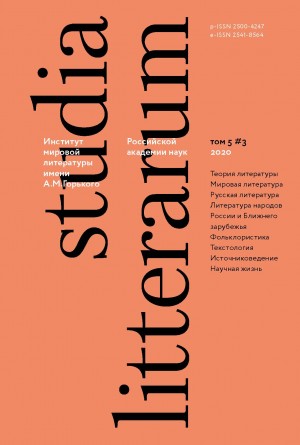How the french discovered the Lower depths
Journal title: Studia Litterarum
Authors: S. Rolet
Subject(s): Literature, Languages and Literature

Journal title: Studia Litterarum
Authors: S. Rolet
Subject(s): Literature, Languages and Literature
Journal title: Studia Litterarum
Authors: M.-Ch. Autant-Mathieu
Subject(s): Literature, Languages and Literature
Journal title: Studia Litterarum
Authors: L. Heller
Subject(s): Literature, Languages and Literature
Journal title: Studia Litterarum
Authors: L.A. Spiridonova
Subject(s): Literature, Languages and Literature
Journal title: Studia Litterarum
Authors: O.A. Ovcharenko
Subject(s): Literature, Languages and Literature
Journal title: Studia Litterarum
Authors: S.M. Demkina
Subject(s): Literature, Languages and Literature
Journal title: Studia Litterarum
Authors: M.A. Arias-Vikhil
Subject(s): Literature, Languages and Literature
Journal title: Studia Litterarum
Authors: S.K. Rosovetsky
Subject(s): Literature, Languages and Literature
Journal title: Studia Litterarum
Authors: T.A. Agapkina
Subject(s): Literature, Languages and Literature
Journal title: Studia Litterarum
Authors: A.L. Nalepin
Subject(s): Literature, Languages and Literature
Journal title: Studia Litterarum
Authors: A.I. Dormidontova
Subject(s): Literature, Languages and Literature
Journal title: Studia Litterarum
Authors: I.K. Staf
Subject(s): Literature, Languages and Literature
Journal title: Studia Litterarum
Authors: N. Langbour
Subject(s): Literature, Languages and Literature
Journal title: Studia Litterarum
Authors: Haltrin-Khalturina E.V.
Subject(s): Literature, Languages and Literature
Journal title: Studia Litterarum
Authors: Anna V. Dobryashkina
Subject(s): Literature, Languages and Literature